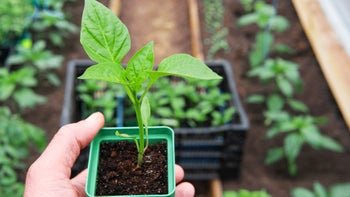
Is Raw Milk Safe? A Look at the Potential Risks of Unpasteurized Milk
Key takeaways:
Raw milk isn’t pasteurized. Pasteurized milk is heated to kill off any potentially harmful bacteria.
Raw milk can contain bacteria like Salmonella and E. coli that can make people sick. Symptoms usually include fever and diarrhea.
The CDC and the FDA recommend drinking pasteurized milk as it’s safer and has similar nutritional benefits.
Table of contents

In the U.S., most of the milk you drink is pasteurized. Pasteurization of cow’s milk was introduced over 100 years ago to decrease the infections passed from animals to humans. In 1900, about 10% of people in the U.S. infected with tuberculosis were believed to have caught it from infected cow’s milk. Pasteurization reduced the spread of tuberculosis and other diseases.
But recently, the consumption of raw, unpasteurized milk has increased. Let’s take a closer look at the risks and benefits of consuming raw milk.
What is raw milk?
Raw milk is milk that is bottled without undergoing pasteurization. Pasteurization is a process that heats the milk to kill off any bacteria. So, raw milk is essentially milk directly from the cow that doesn’t undergo processing. It can be sold directly to consumers to drink. Raw milk is also sometimes used to make some soft cheeses and yogurts.
Raw milk isn’t sold everywhere though. Sales are heavily restricted and even illegal in some states.
Lactose intolerance versus milk allergy: Does drinking milk give you symptoms? Learn the difference between these two conditions.
Alternatives to milk: If you don’t drink cow’s milk, try one of these plant-based milks.
A2 milk: Is it better for you than regular milk?
Is it safe to drink raw milk?
Raw milk can contain germs and bacteria that can come from:
An animal’s udder
The environment (like the soil)
Machines used for milking and bottling
Just like other forms of food poisoning, consuming raw milk that has harmful germs can make you sick. Symptoms can include:
Flu-like symptoms
Mild fever
Body aches
Nausea
Stomach cramps
Diarrhea
Most healthy people recover from an illness contracted from raw milk after a few days. But some people can progress to more serious conditions that can result in things like kidney failure, paralysis, and in the worst cases, death. We’ll go through these conditions in a little more detail below.
The risk of getting sick from raw milk is highest in:
Adults over 65 years old
Children less than 5 years old
People with weakened immune systems
Pregnant women
Read more like this
Explore these related articles, suggested for readers like you.
Even though this risk is higher in certain people, the CDC and the FDA openly issue warnings about the risks of drinking raw milk for everyone.
What are the infection risks of drinking raw milk?
There are a few bacteria that are more commonly associated with drinking raw milk.
Campylobacter
Campylobacter is a bacteria that causes diarrhea, stomach cramps, and mild fever. People can get Campylobacter from raw chicken or poultry products. But they can also get sick after drinking raw milk from cows infected with Campylobacter.
In rare cases, an infection with Campylobacter can progress into paralysis, known as Guillain-Barré syndrome. This is a rare autoimmune condition that causes nerve damage, usually starting in the legs.
Salmonella
Salmonella is bacteria that lives in the stools of many animals and is a relatively common source of foodborne illness in humans. You often hear about this from eating raw or undercooked chicken. But you can also get Salmonella from drinking raw milk. Just like with Campylobacter the symptoms of Salmonella include fever, stomach cramps, and diarrhea.
Escherichia coli (E. coli)
E. coli is a common bacteria in our environment. Some strains of E. coli bacteria that live in the stool of animals can make humans sick. This is because they produce a toxic substance that can cause bloody diarrhea, stomach cramps, and vomiting.
In about 5% to 10% of people, E.coli can lead to a serious disease called hemolytic uremic syndrome. This happens about 7 days after someone initially gets sick and causes their kidneys to stop working. Most people who develop this usually recover after a few weeks in the hospital. In rare cases the condition can be fatal.
Avian Influenza (Bird flu)
Avian influenza, known as bird flu, is a strain of the flu that can be fatal in birds. It can also be passed to farm animals. Bird flu has been detected in cows, but there hasn’t been any known contamination of bird flu in milk.
The FDA continuously monitors milk production, both raw and pasteurized. And scientists believe that the normal pasteurization process kills off the bird flu virus, leaving minimal threat to humans.
Are there benefits to drinking unpasteurized milk?
Health food experts may claim that drinking raw milk is more beneficial because:
Unprocessed foods are healthier than processed foods.
There’s more nutrition in raw milk than pasteurized milk.
Raw milk contains more probiotics than pasteurized milk.
Raw milk is easier to tolerate for people who are lactose intolerant.
But there are no proven benefits to drinking raw milk over pasteurized milk. And pasteurized milk still contains plenty of nutrition. In fact, the nutritional content of raw milk and pasteurized milk is practically the same. It’s unlikely that any potential benefit from good bacteria outweighs the potential risk from harmful bacteria. The best source of probiotics is from cultured dairy products, like yogurt, made from pasteurized milk.
It’s also important to note that raw milk isn’t the same as organic or grass-fed milk. These types of milk are still usually pasteurized. Raw milk doesn’t necessarily come from organic cows and farms. Even if raw milk is organic, it can still contain harmful bacteria.
The tricky thing is that not every cup of raw milk has harmful bacteria. You may hear people say they consume raw milk without ever getting sick. While this may be true, there’s no way to ensure that the next cup of raw milk you consume won’t have a bacteria that can make you sick.
The bottom line
Raw milk potentially contains bacteria that can make people sick. Raw milk doesn’t undergo the pasteurization process, which helps kill off these harmful bacteria. For many people, these illnesses will cause uncomfortable symptoms like fever and diarrhea that will pass on their own. For others, these can become more serious conditions that lead to complications or even death. For your safety, the FDA and the CDC don’t recommend that anyone drink raw milk.
Why trust our experts?


References
Animal and Plant Health Inspection Service. (2024). Highly pathogenic avian influenza (HPAI) detections in livestock. U.S. Department of Agriculture.
Buzby, J. C., et al. (2013). Characteristics of consumers of unpasteurized milk in the United States. The Journal of Consumer Affairs.
California Department of Public Health. (2023). Raw milk and raw daily products.
Centers for Disease Control and Prevention. (2021). E. coli (Escherichia coli): Symptoms.
Centers for Disease Control and Prevention. (2023). Raw milk.
Claeys, W. L., et al. (2013). Raw or heated cow milk consumption: Review of risks and benefits. Food Control.
Lucey, J. A. (2015). Raw milk consumption: Risks and benefits. Nutrition Today.
ProCon.org. (2024). State-by-state raw milk laws.
U.S. Food and Drug Administration. (2024). The dangers of raw milk: Unpasteurized milk can pose a serious health risk.
U.S. Food and Drug Administration. (2024). Updates on highly pathogenic avian influenza (HPAI).





























